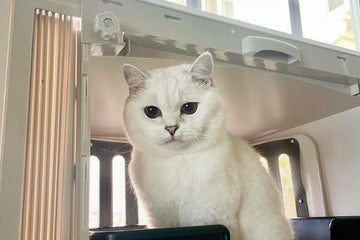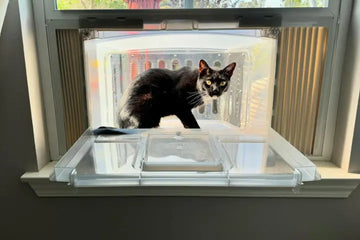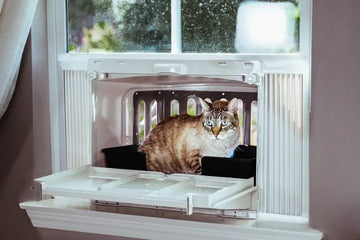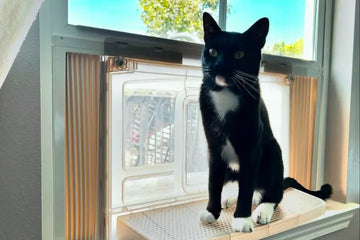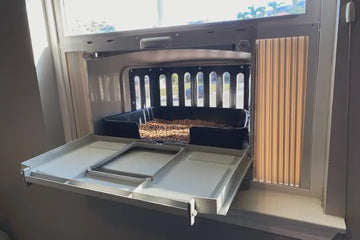Litter box training is an essential part of cat ownership, ensuring a hygienic living environment for both the cat and its owner. Training your cat to use a cat litter box properly is not only about convenience but also about their health and well-being. A well-trained cat that consistently uses the litter box is less likely to develop unwanted habits or behaviors related to discharge. This training can also significantly reduce the chances of unpleasant odors and maintain cleanliness in your home.
Starting Litter Training Early
Beginning litter box training at an early age is crucial for kittens. Young cats are more adaptable and can learn good habits more quickly and easily. Early training establishes a routine and helps prevent future issues related to litter box use. For kittens, learning to use a cat litter box is a natural process, as they instinctively seek a sandy, granular place to eliminate. Starting training early maximizes this natural inclination and lays the groundwork for good litter habits.
Choosing the right litter box is vital for successful training. For kittens, the box should be easily accessible, with low sides for easy entry and exit. As they grow, the size of the box may need to be adjusted. It's essential to consider the types of cat litter boxes available and select one that suits your kitten's size and your living space. A box that's too large or too intimidating can deter a kitten from using it.
Introducing your cat to their litter box should be a gentle and gradual process. Place the kitten in the box after meals, naps, or play sessions, as these are times they're most likely to eliminate. Ensure the cat litter box is placed in a quiet, accessible location, away from high-traffic areas and loud noises that might intimidate or distract your kitten.
Choosing the Right Litter Box
When selecting a cat litter box, it's important to consider the various types available and their respective advantages and disadvantages. Traditional open boxes are widely used due to their simplicity and affordability. However, they may not offer the best odor control and can lead to litter being scattered outside the box. On the other hand, covered boxes can help contain odors and provide privacy for your cat, but some cats may feel confined or reluctant to use them. Assessing your cat's behavior and preferences is crucial in choosing the best cat litter box.
Self-cleaning litter boxes are designed to ease the burden of regular cleaning, automatically removing waste and maintaining a clean environment. While they offer convenience, it’s important to consider if your cat will be comfortable with the movement and sound of the automatic mechanism. These boxes can be effective for busy cat owners but require a compatible type of litter and regular checks to ensure they are functioning properly.
Selecting the Appropriate Litter
Selecting the right cat litter is as crucial as choosing the correct litter box. The litter you choose can significantly impact your cat’s comfort and willingness to use the litter box, as well as how effectively it controls odors. When selecting the appropriate litter, consider the following points:
- Texture Preference: Observe if your cat prefers fine or coarse litter.
- Scent: Choose a mild scent for the best cat litter box for odor control.
- Dust Levels: Opt for low-dust litters for respiratory health.
- Eco-Friendliness: Consider biodegradable litter for environmental concerns.
- Cat's Health: Special litters are available for cats with health issues.
Testing and observing your cat's reaction to different litters can guide you to the most suitable option. Keep in mind that cats can be particular about their litter, so patience and experimentation might be necessary. Once you find a litter that both you and your cat are happy with, it can greatly improve the ease and effectiveness of litter box training.
Step-by-Step Guide to Litter Training
Litter training your cat is a critical step in ensuring a clean and harmonious home environment. It requires patience, consistency, and an understanding of your cat's behaviors and preferences. Key steps in the litter training process include:
- Establishing a Routine: Set regular feeding times to predict when your cat will need the litter box.
- Encouraging Use After Meals and Naps: As mentioned previously, gently guide your cat to the litter box during these times.
- Positive Reinforcement: Reward your cat with treats or affection when they use the box correctly.
- Addressing Reluctance or Fear: Experiment with the box's location or different types of cat litter if your cat seems hesitant.
By following these steps, you can effectively train your cat to use the litter box. It's crucial to be patient and attentive to your cat's needs throughout this process. With time and consistent effort, litter box training can lead to a cleaner home and a happier, well-adjusted cat. Remember, the goal is to create a positive and stress-free experience for your cat, encouraging them to use the best cat litter box for their needs.
Dealing with Behavioral Challenges
If your cat refuses to use the litter box, consider the following solutions. First, ensure the box is always clean, as cats are very particular about cleanliness. If you're using a covered box, try switching to an open one to see if your cat prefers it. Sometimes, changing the cat litter type can make a difference, as cats may be sensitive to certain textures or scents. Accidents outside the litter box are common during the training phase. When these occur, clean the area thoroughly to remove odors that might encourage repeat behavior.
Maintaining Good Litter Box Habits
Cats are naturally clean animals and prefer a hygienic place to do their business. Scoop the litter daily to remove waste and keep the box odor-free. A thorough cleaning of the box with mild detergent should be done weekly. Using odor control cat litter can also help in maintaining a fresh environment.
It's important to monitor your cat's litter box habits for any signs of health-related issues. Changes in frequency, consistency, or appearance of waste can be early indicators of health problems. If you notice any significant changes, it's advisable to consult a veterinarian. Keeping a clean cat litter box not only encourages proper usage but also makes it easier to spot any health concerns.
As cats age, their preferences and abilities may change. Older cats might find it challenging to get into a high-sided box, necessitating a switch to one with lower sides. The type of cat litter might also need to be changed if your senior cat develops sensitivities. It's important to adjust your litter box practices to accommodate the changing needs of your aging cat.
In larger homes or homes with multiple cats, having more than one litter box is recommended. The general rule is one box per cat, plus one extra. Multiple boxes ensure that each cat has access to a clean box at all times and helps in reducing territorial disputes. Placing the boxes in different areas of your home can also prevent any litter box aversion due to location preferences.
Continuing to foster good litter habits in your cat involves regular monitoring and adjustments as needed. Regular cleaning of the litter box and timely replacement of the cat litter are essential for keeping the area inviting to your cat. Be aware of any changes in your cat's health or behavior, as these can affect litter box usage. Always provide an accessible and comfortable litter box environment, especially as your cat ages or if any changes occur in your household. By following these guidelines and remaining patient and observant, you can ensure the long-term success of your cat’s litter box training, contributing to a clean and harmonious home environment.



